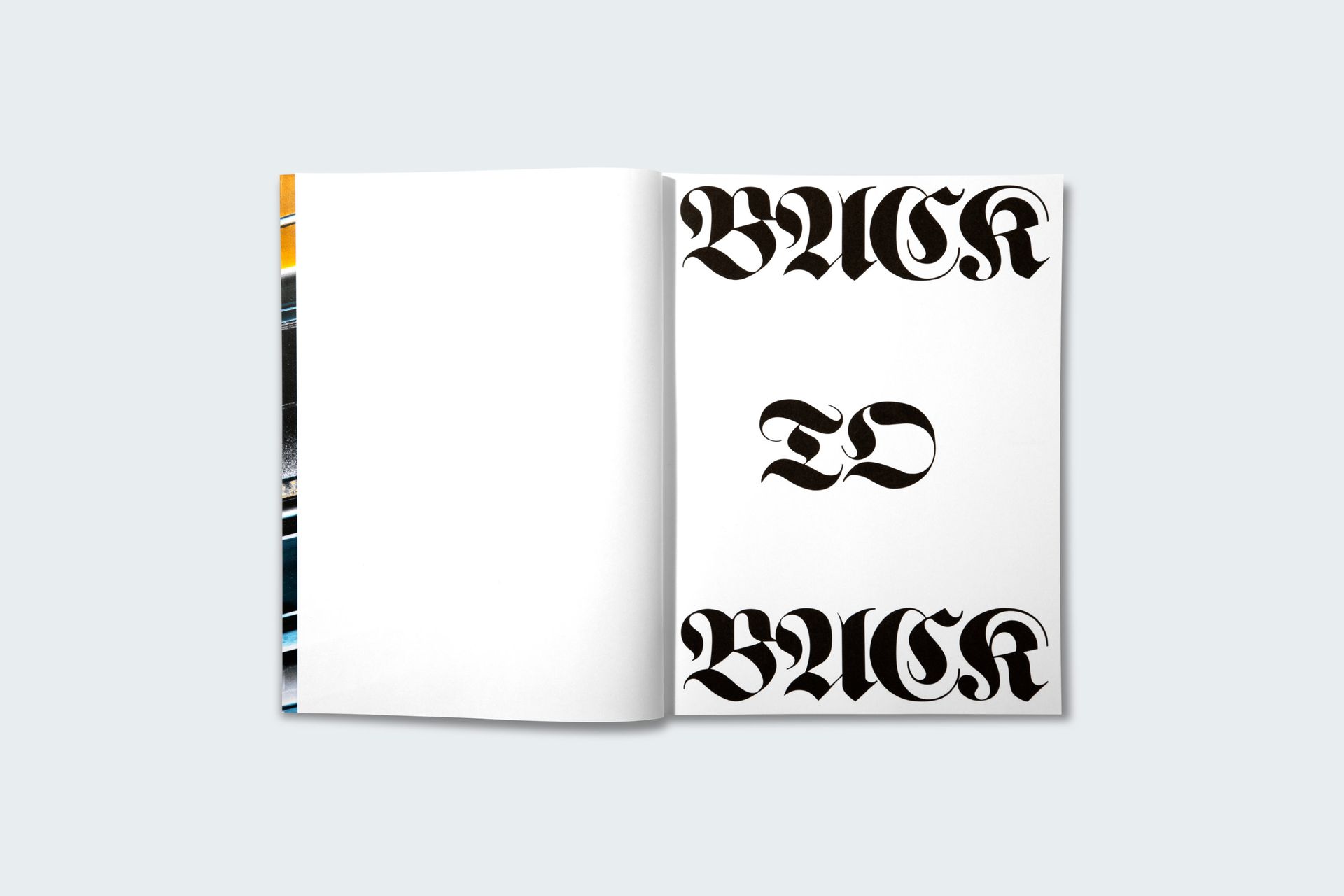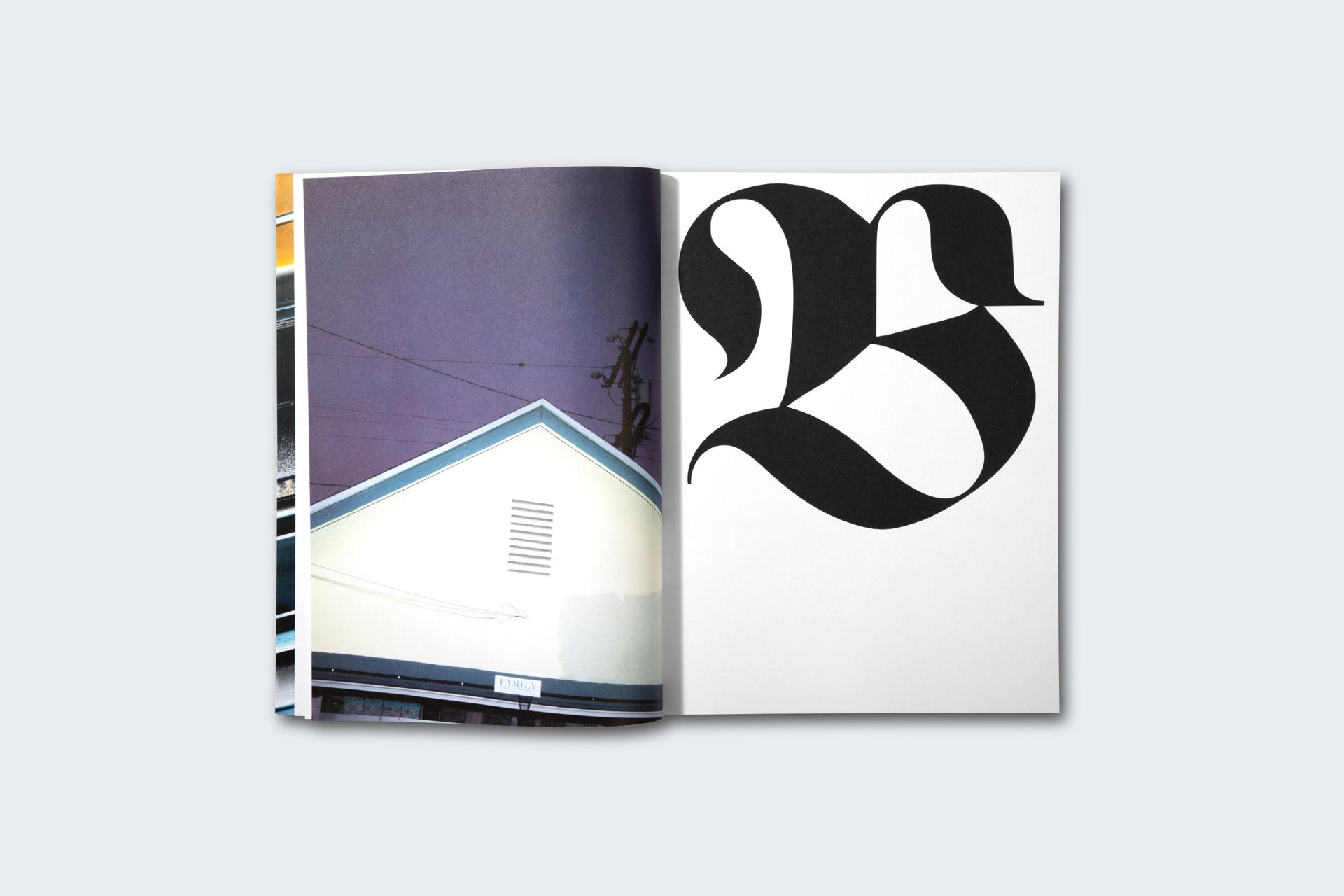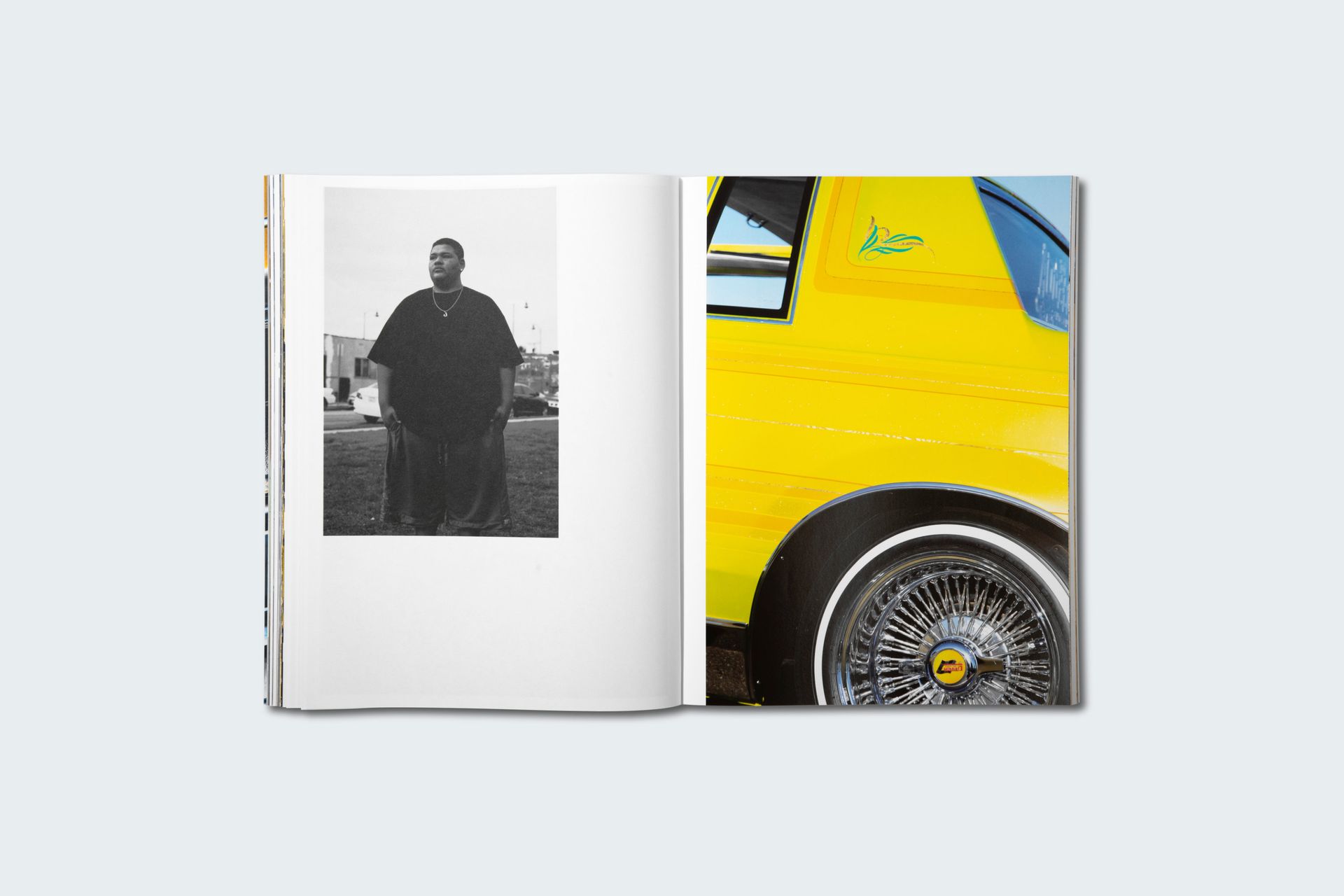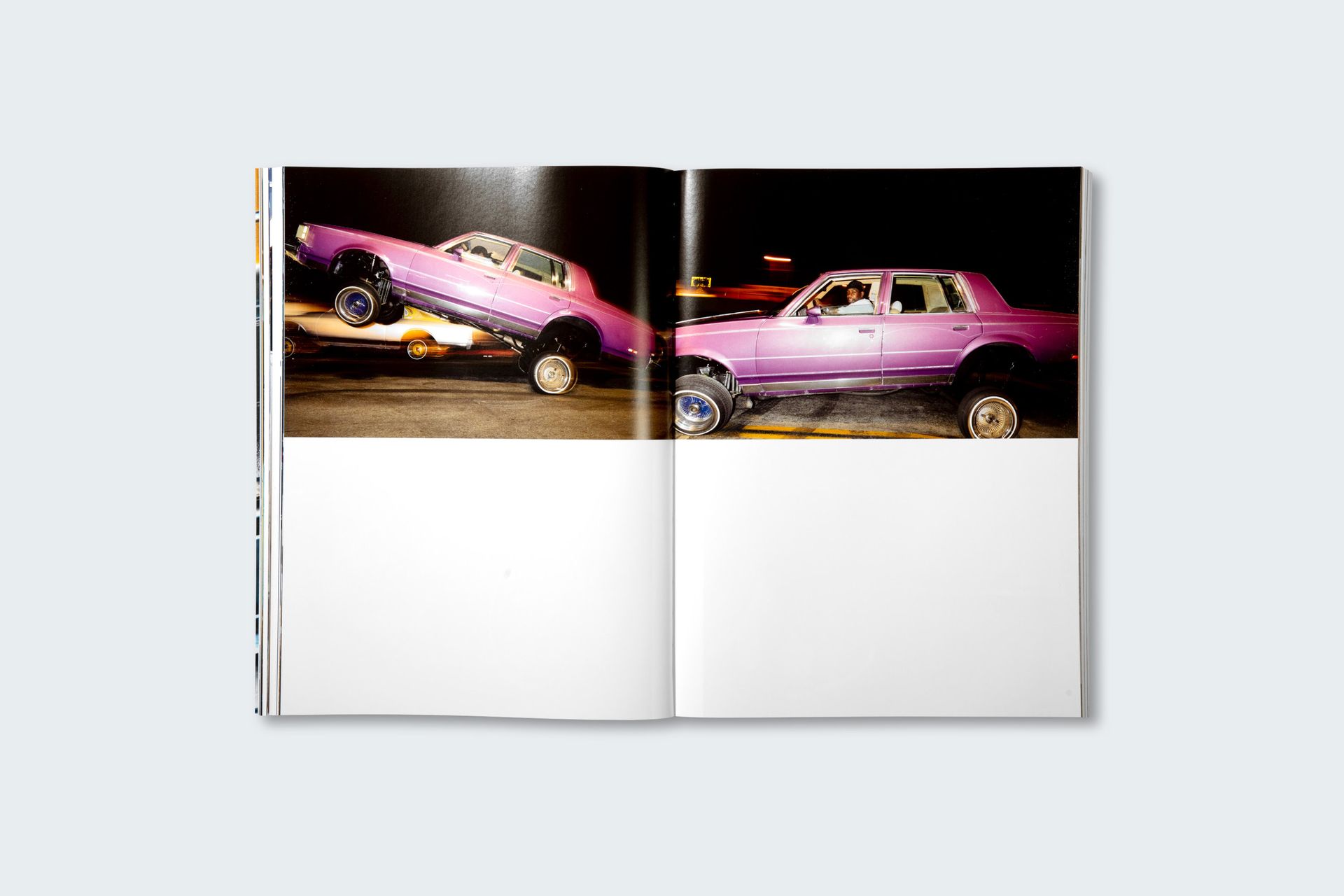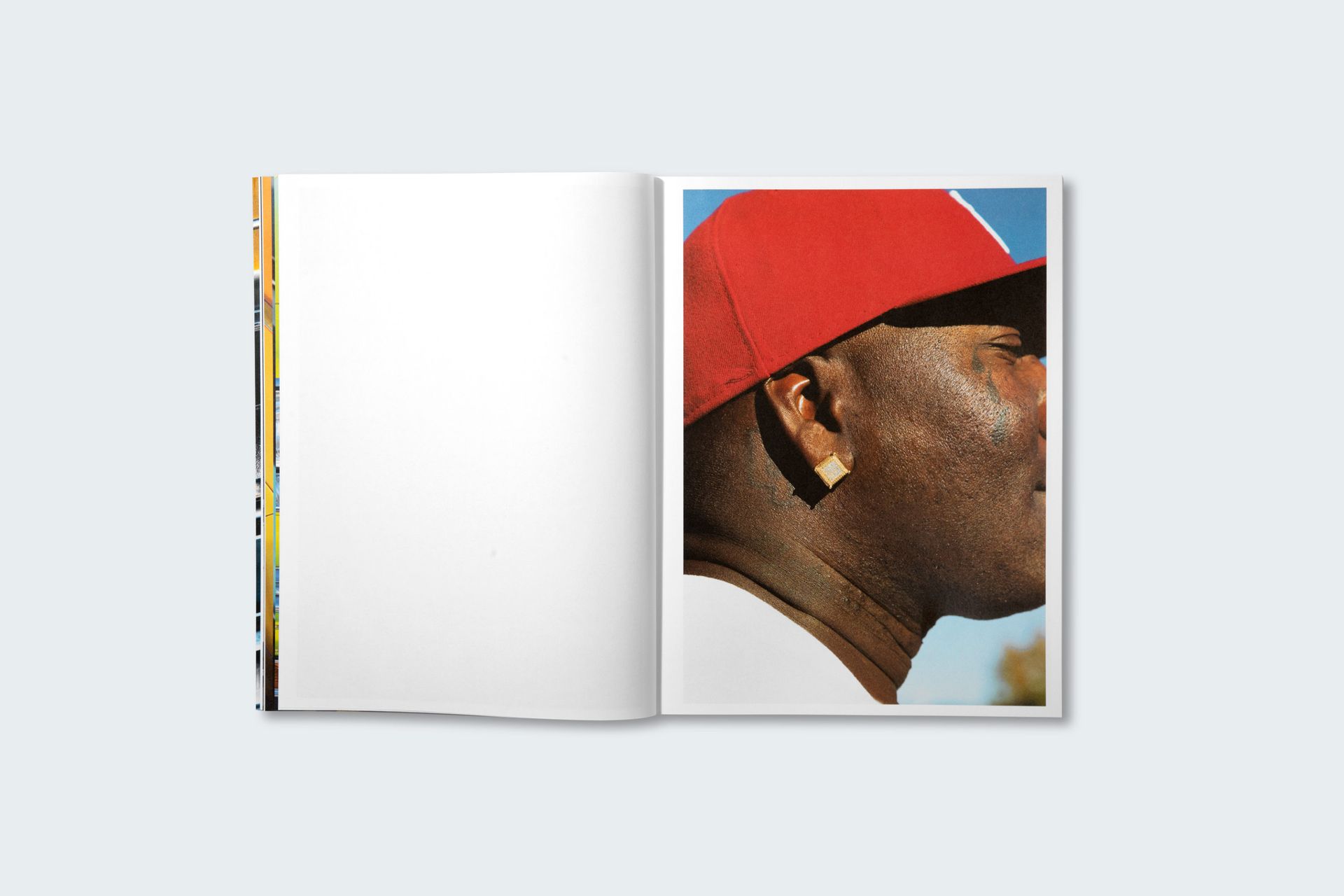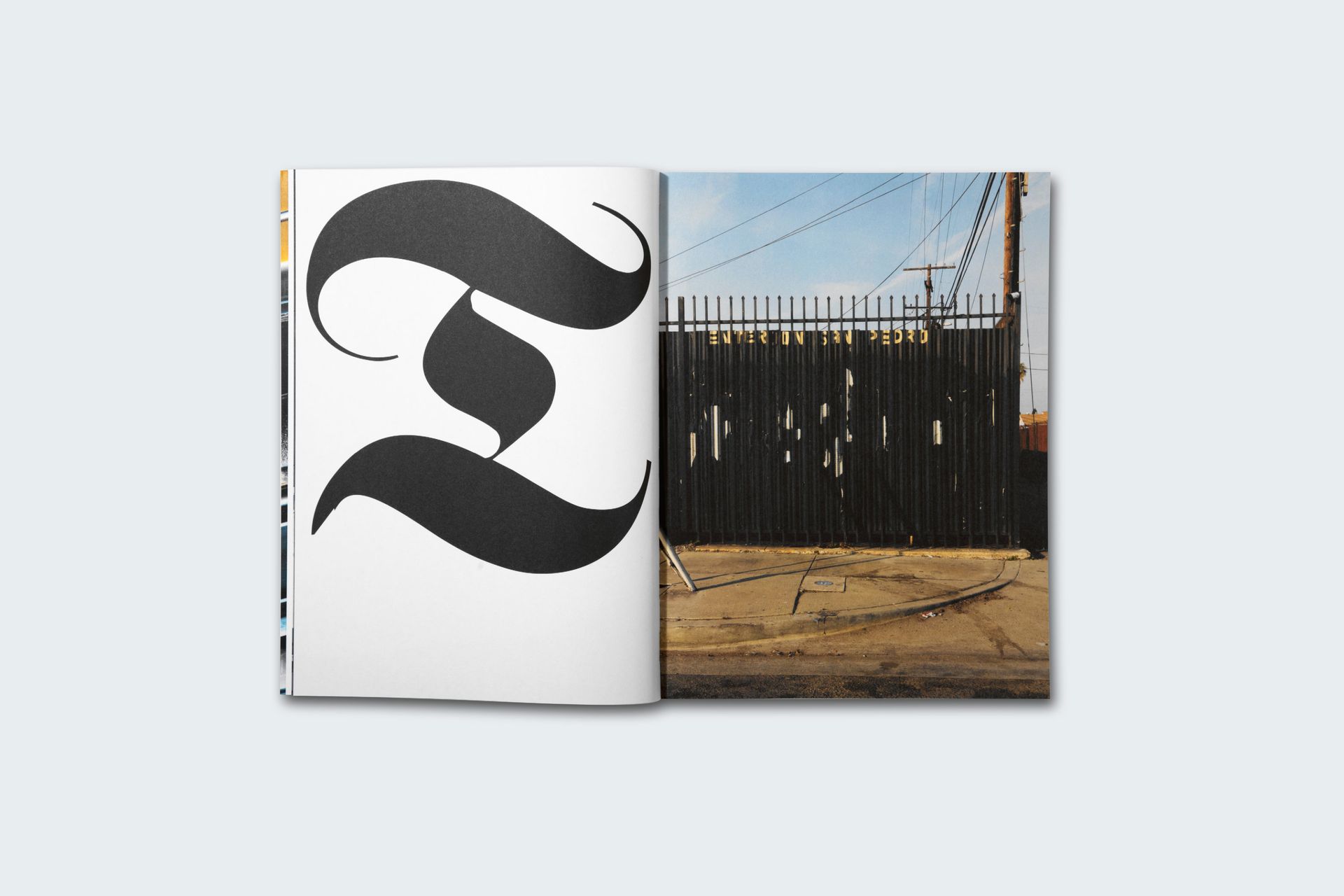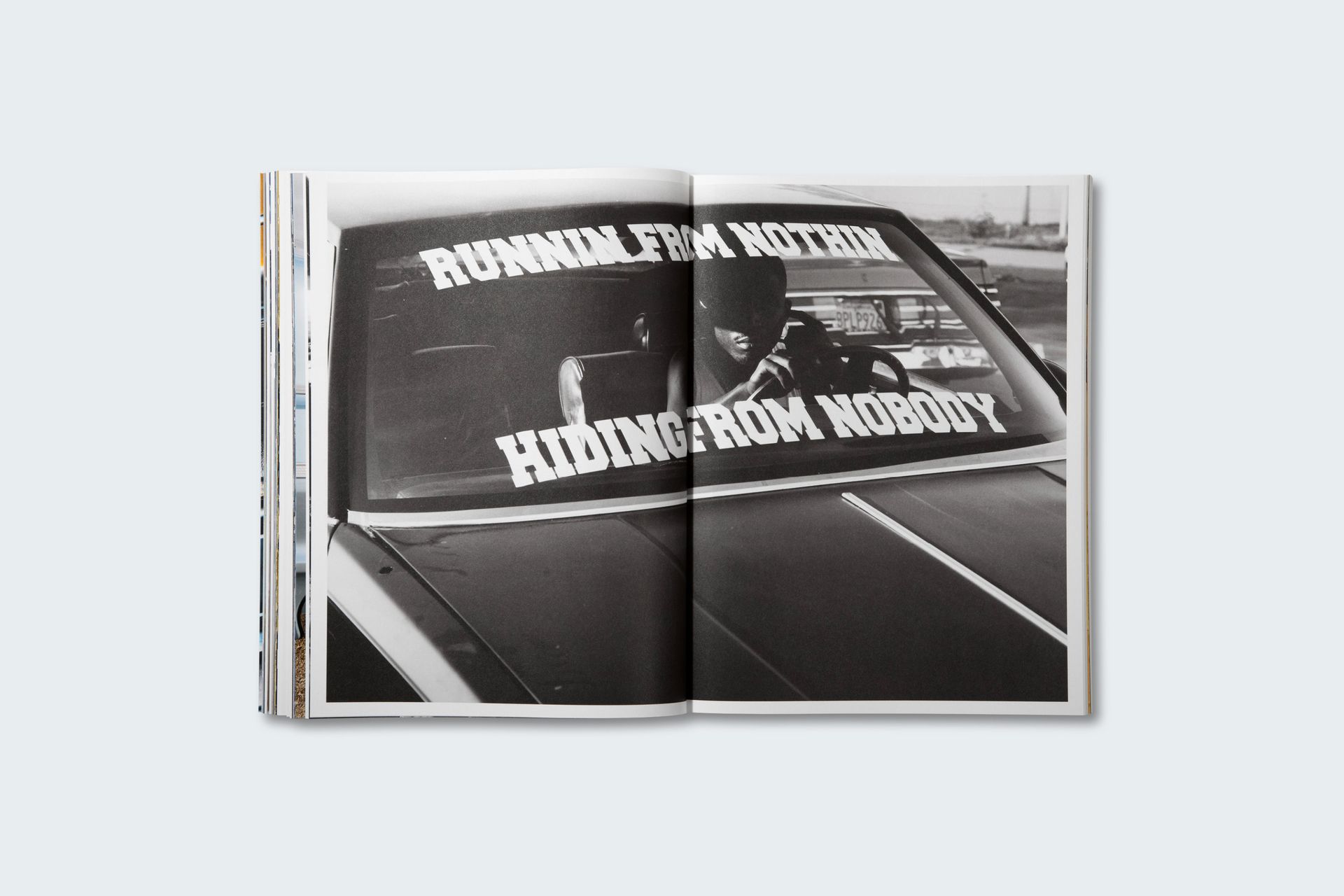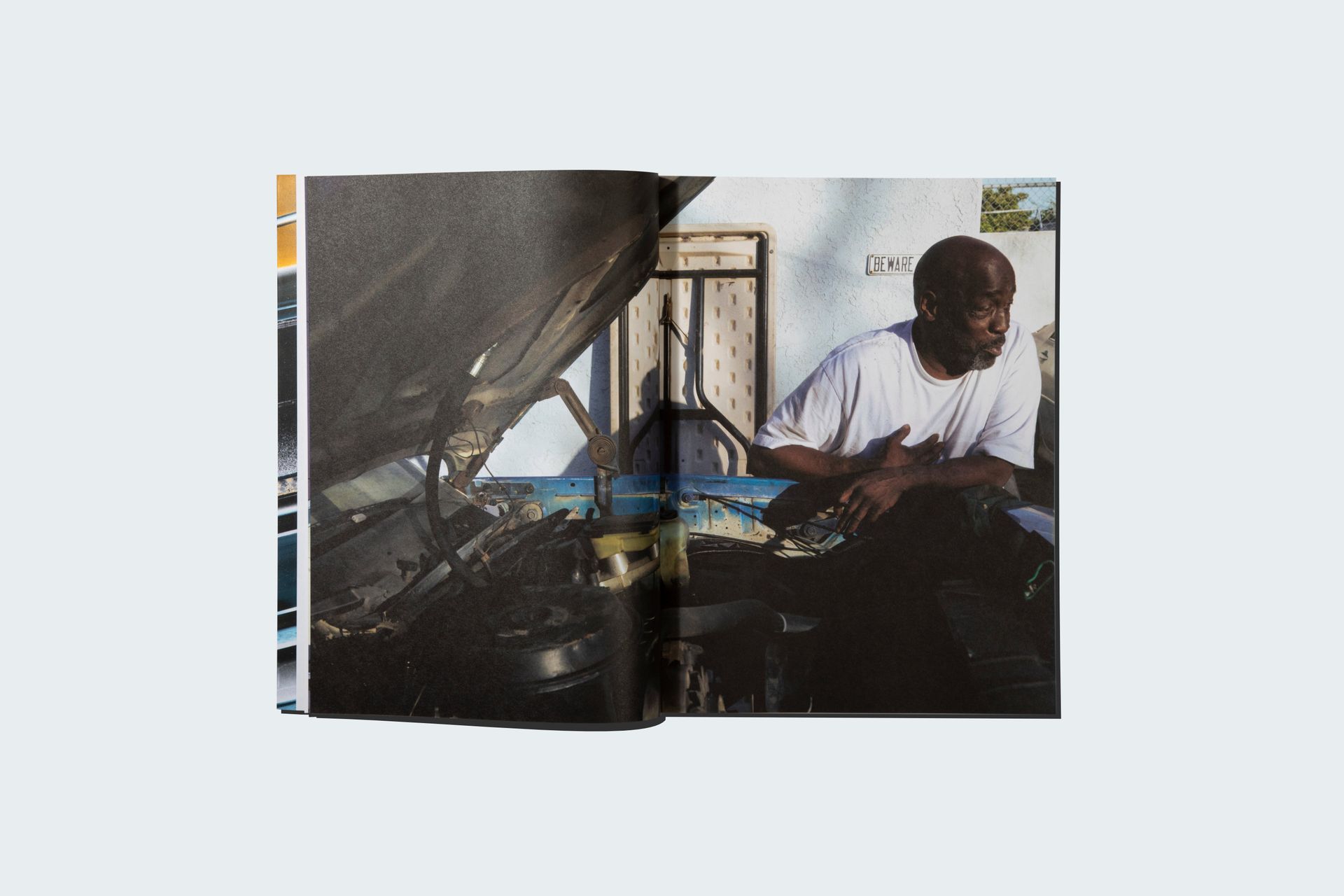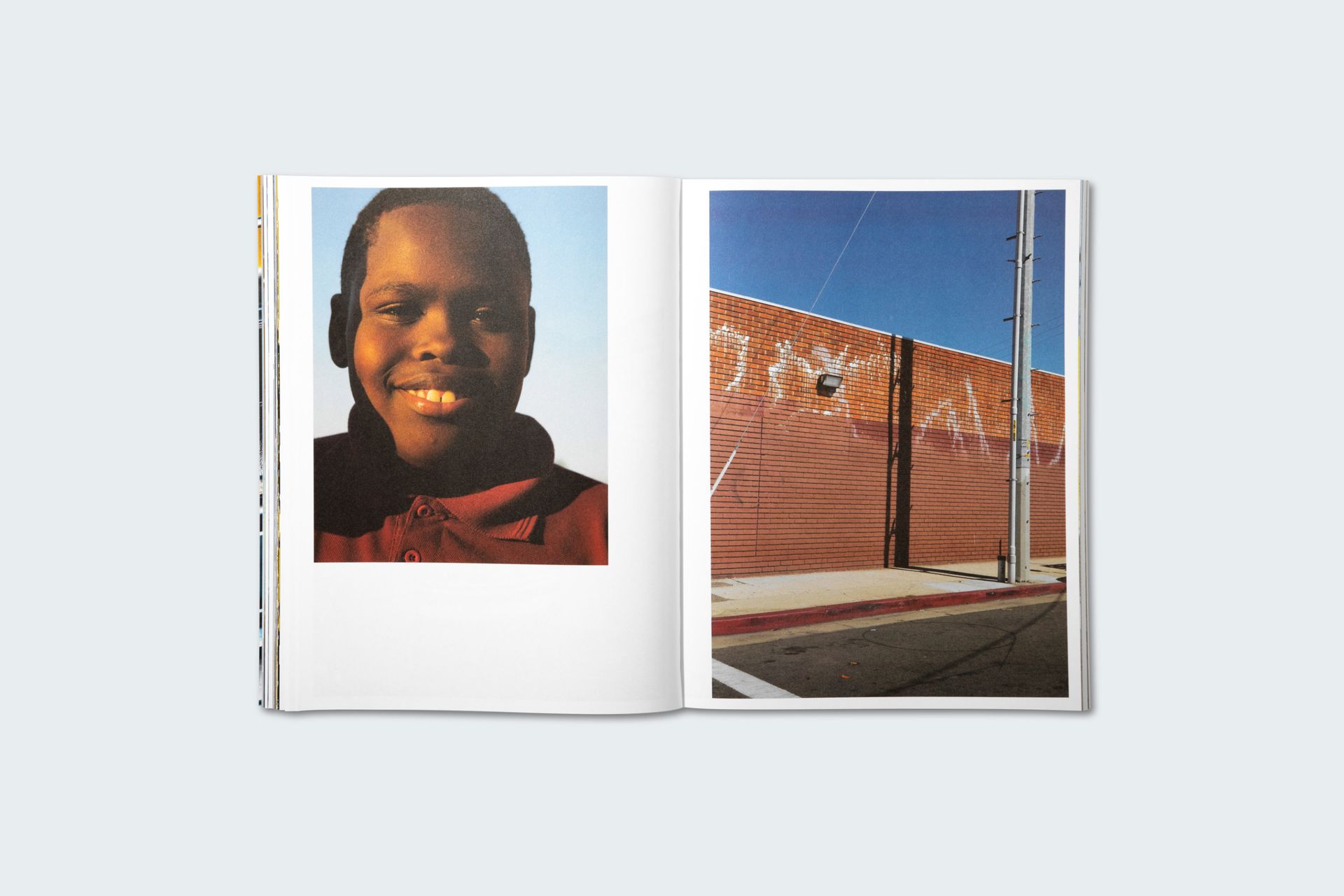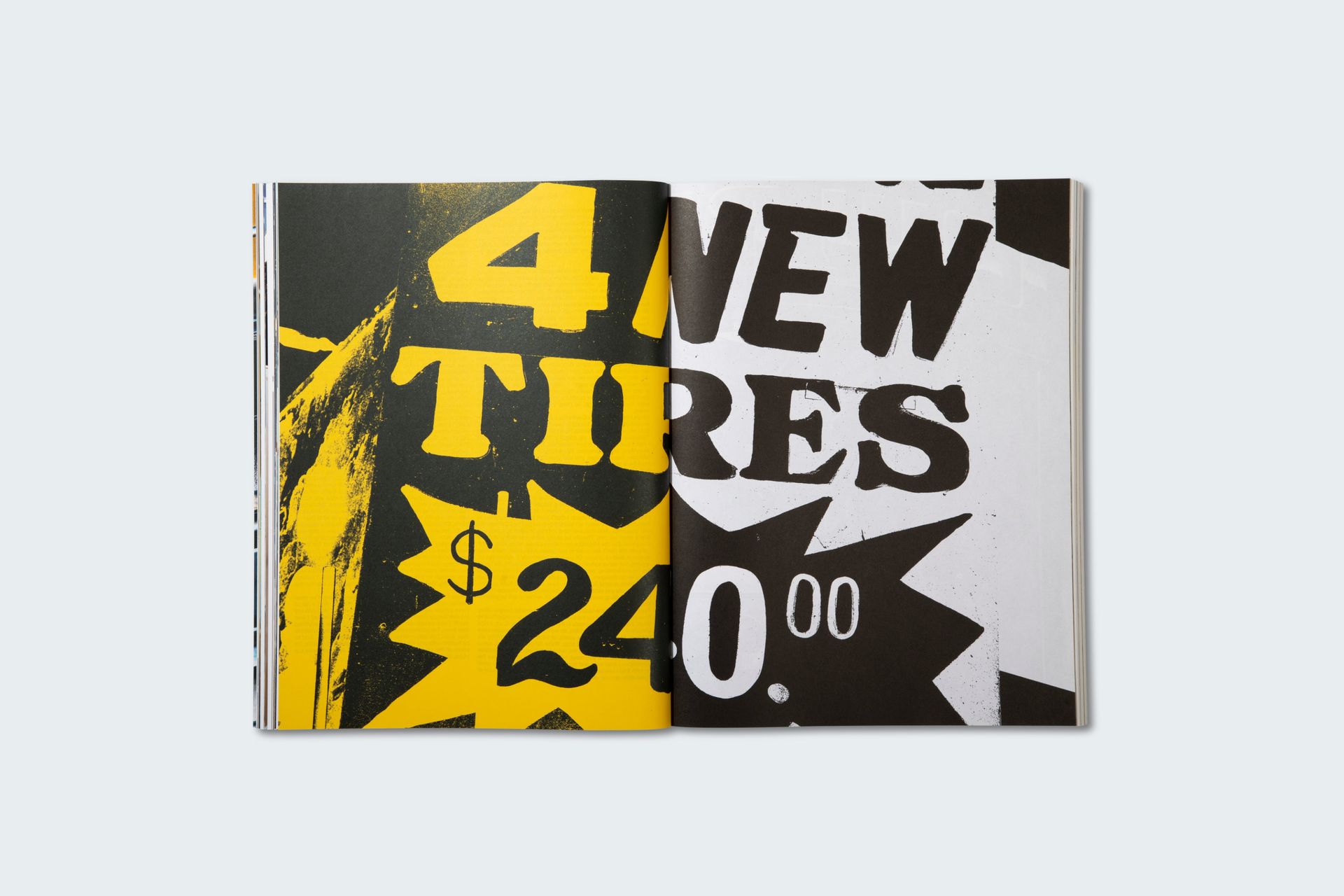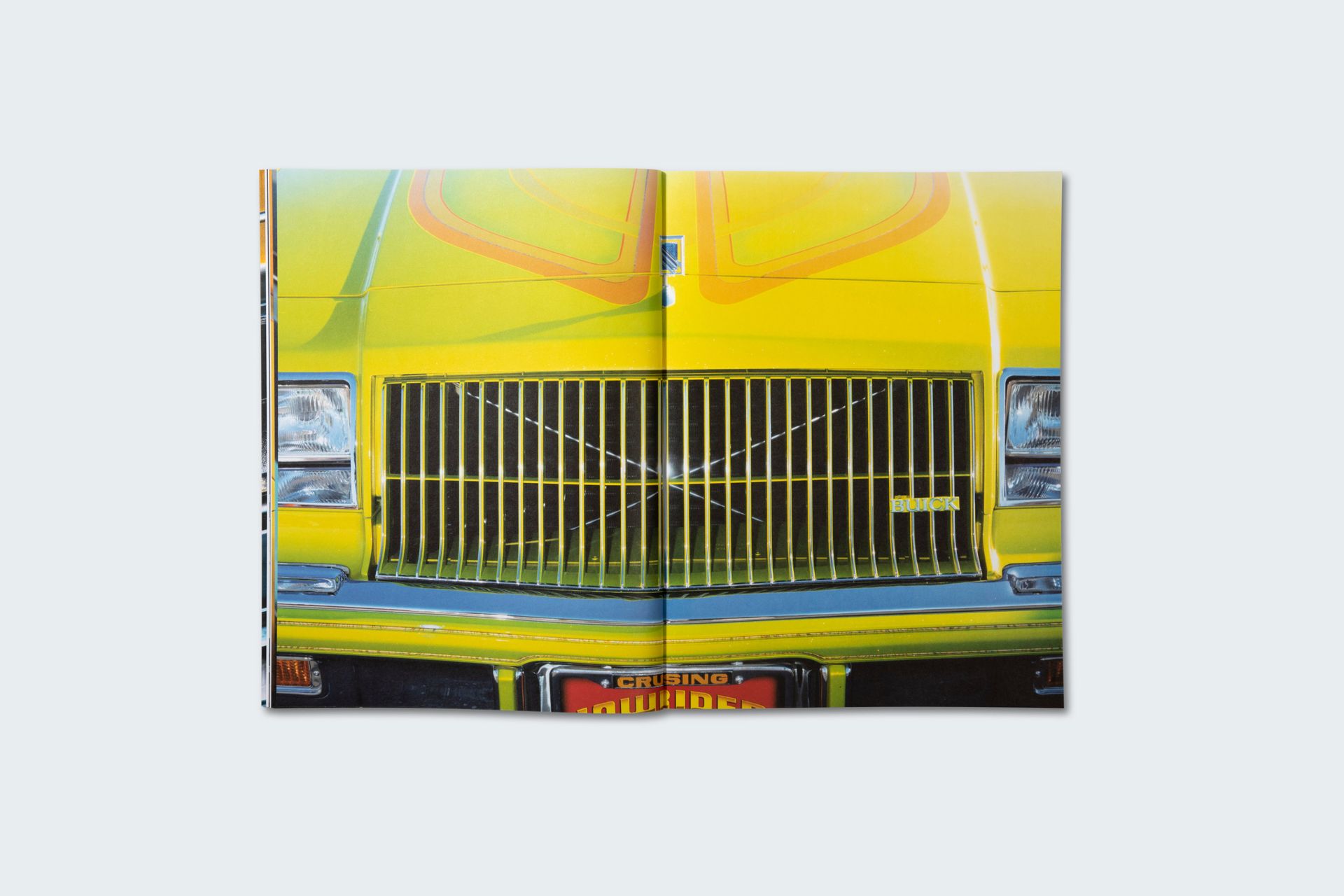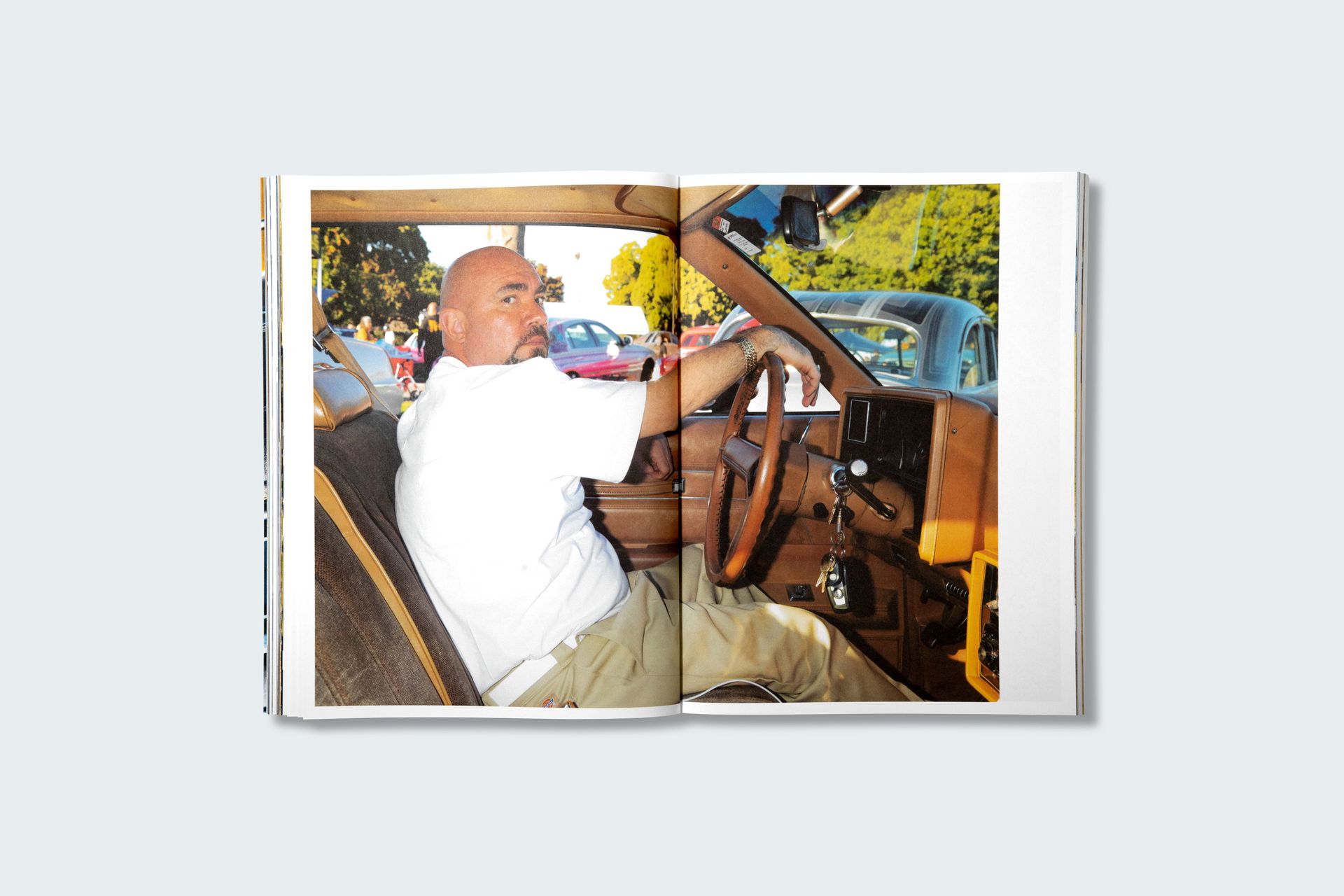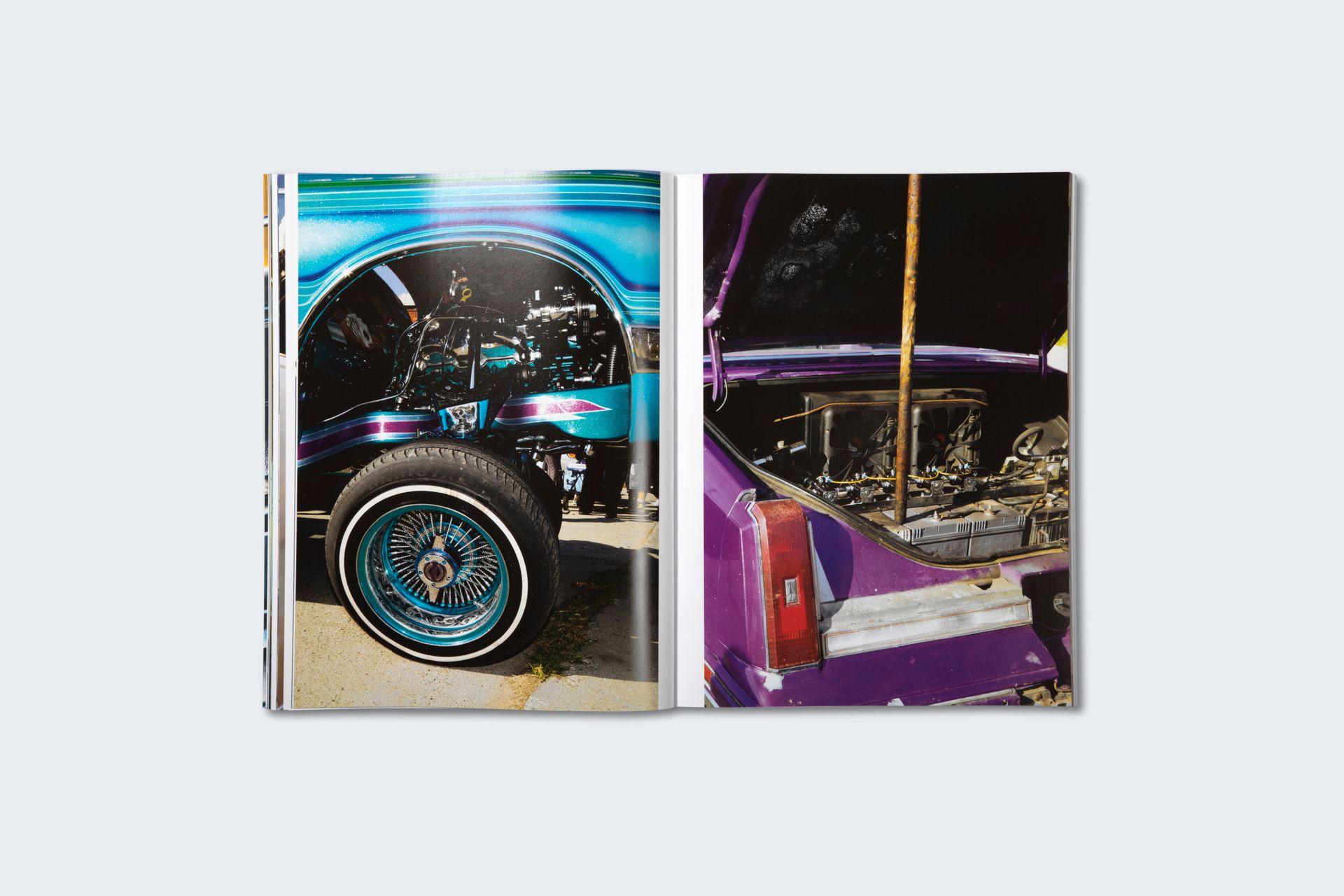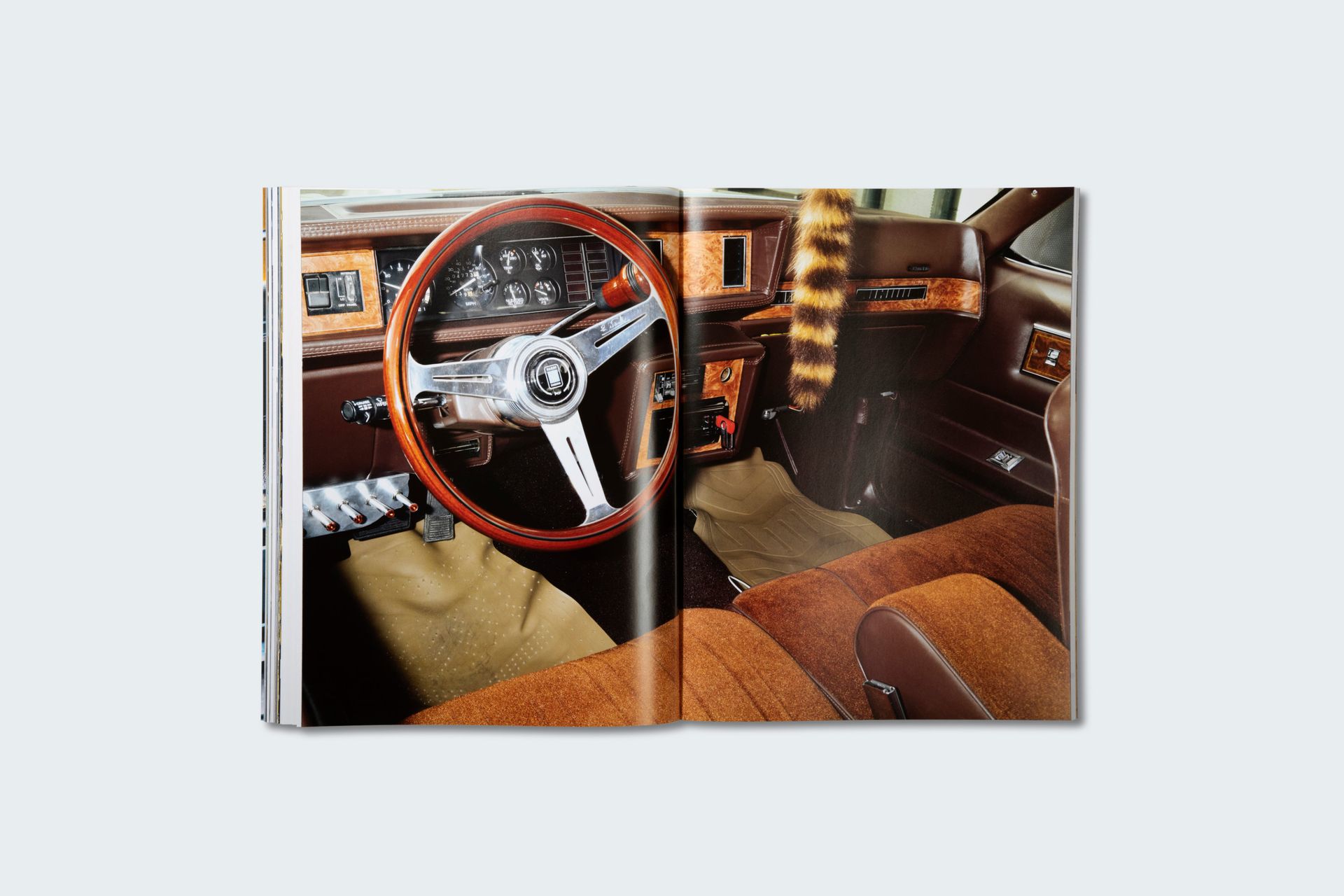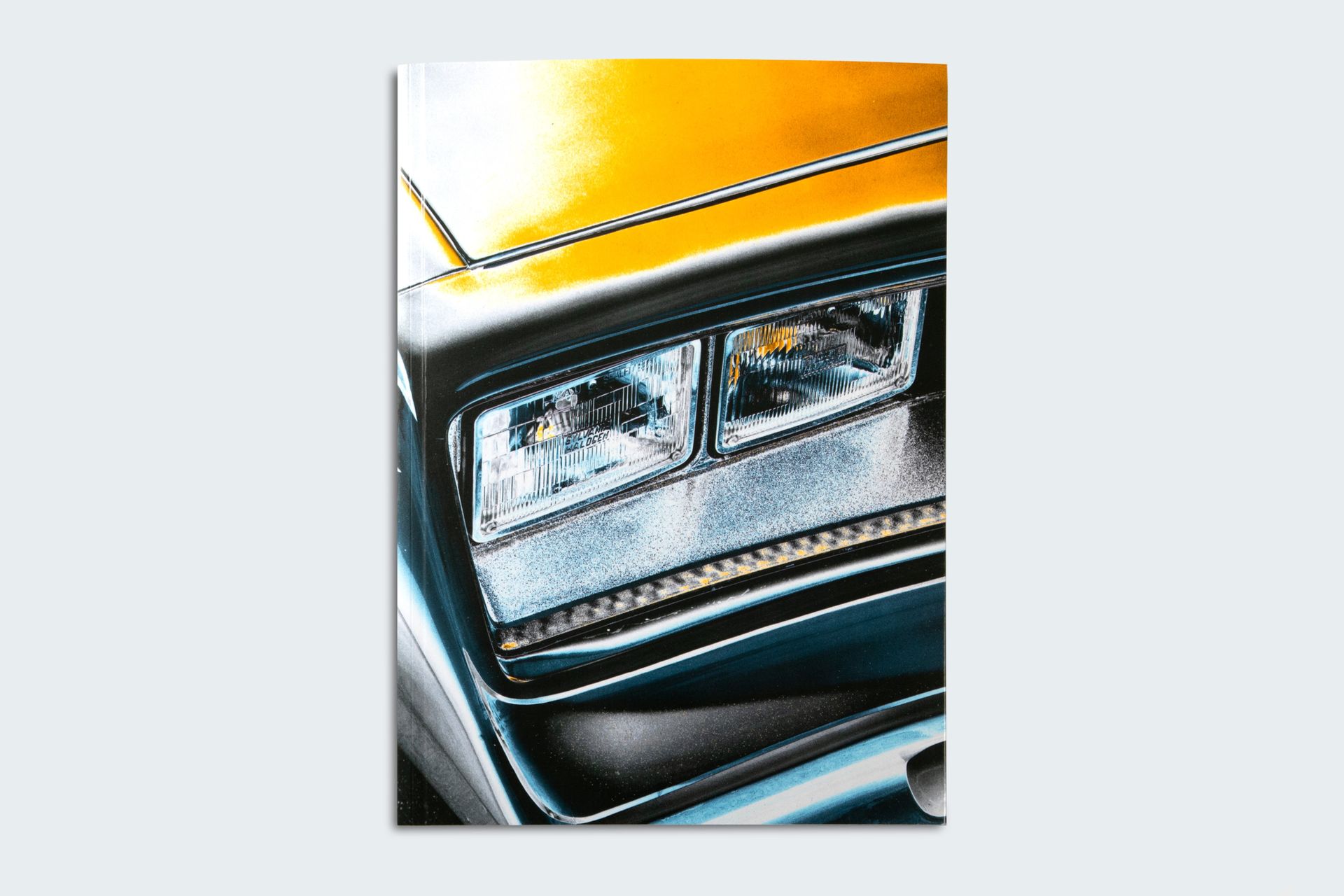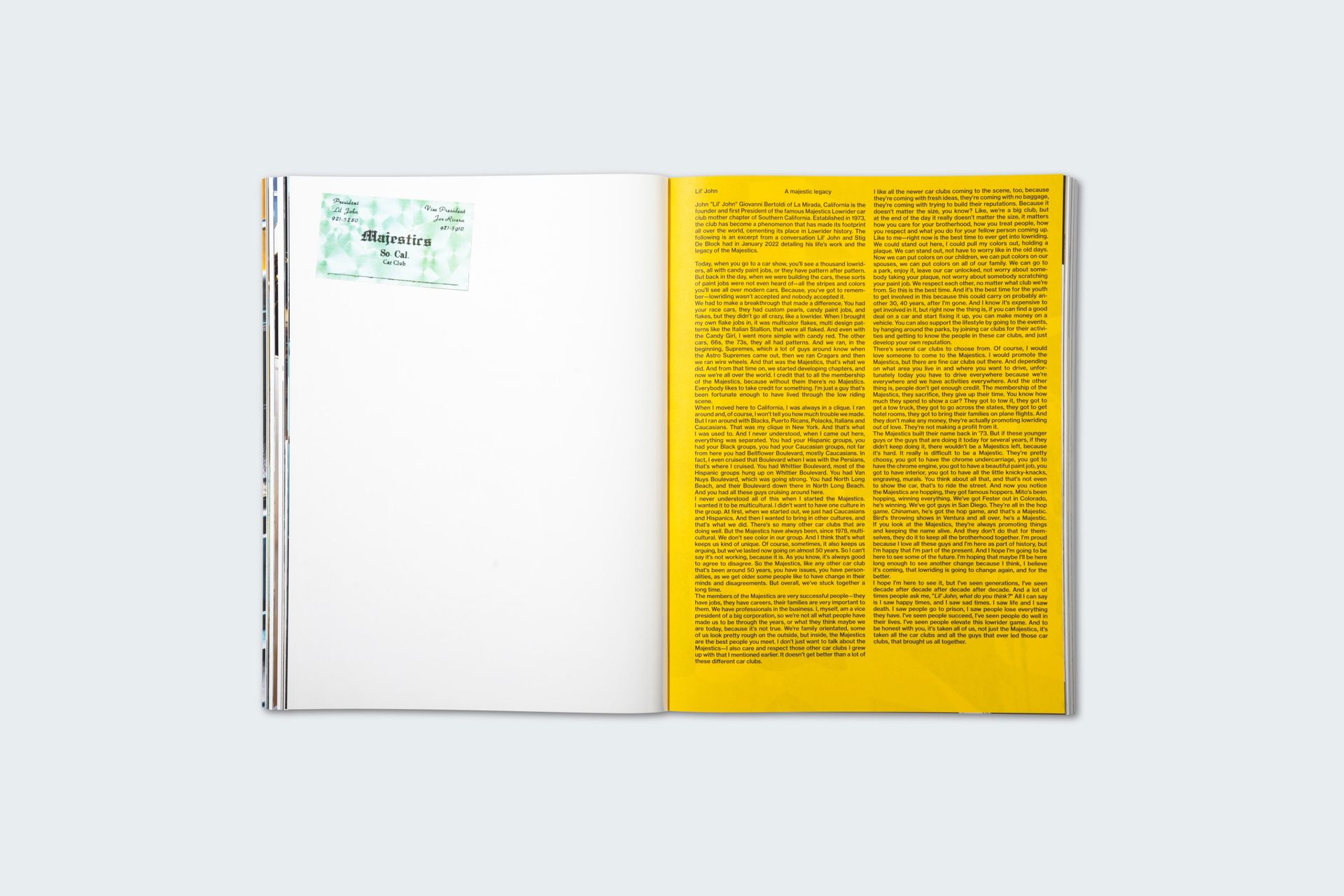Back to Back. From Backyard to Boulevard
Stig De Block
Paperback, 330 x 245 x 20 mm portrait, 240 pages, English
I SPENT 4 YEARS, 9 MONTHS & 1000’s OF MILES ON THE DASH, DOCUMENTING AN HONEST & INTIMATE STORY ABOUT THE LOWRIDER SCENE IN LOS ANGELES, CA. USA.
Belgian born Stig De Block is a photographer and director known for his straight forward process and bold colors. His story driven approach is a constant interaction between the everyday real and his own layers of imagination. With a strong interest in subcultures, the resulting images reflect a contemporary realm of the authentic and explicit beauty. Residing between Antwerp & Los Angeles.
"I can vividly remember the first lowrider event I attended in Los Angeles. I had driven out on a Sunday in October 2018 to attend an event called Sunday Funday. The concept is self-explanatory: everybody comes together to have fun on Sunday, without any bullshit, with a common love for lowriders. It was located at the intersection of Rosecrans on South Broadway, on the border between Compton and Carson, in an industrial area — a very long boulevard with factory buildings and warehouses. When I first showed up in the early afternoon, there weren’t that many people out. But within one hour, the whole place was packed with barbecue vendors and people selling t-shirts and merchandise. I feel like there were 500 to 800 people there that day. And for me it was like: “Wow, all the things that I’ve been interested in my whole life—LA culture, architecture, cars, and rap music— all come together in one place here.” It was very overwhelming at first, but I just kept taking photos, talking to people. I was the only White European male at that time at that venue. As someone who was standing out in the crowd, people approached me, both curious and suspicious. “Are you the feds?” “Do you work for TV, are you a journalist?” “Who are you?” I responded, “No, it’s just my first time here. I’m a photographer from Belgium, passing by because I’m very attracted to the lowrider scene.” In response, a lot of people gave me a warm welcome. “Oh cool. Let me tell you something about my car, look at this hydraulic system, look at the back of the car, I’ll pop the trunk for you.” People began to explain all their customizations—who worked on their car, who did the paint job, what it took for them to build such a car. And it dawned on me: lowriders are about more than just aesthetics. Sunday Funday is a sacred happening. It’s social. It’s political. It’s about community, too: If someone’s in trouble, the community takes care of them with a fundraiser, whether it’s for a health condition, or in some unfortunate cases, a death. I came back following Sunday, and the one after that, and it became a ritual. I went back to Sunday Funday events as much as I could. I made trips in April, June, and October 2019, and January 2020 just before the COVID-19 pandemic happened, and then most recently in January and May of 2022. Upon returning to work more on this documentary project, I realized that even with two years of the pandemic causing a rift in people being able to gather, the people didn’t forget each other, or about me, and the relationships were still the same. Everybody had the same feeling of finally coming together again. Every time I come to L.A, I meet another person who introduces me to their world. If I visit one body shop, I get in contact with another body shop — If I go to a low rider event, I’ll learn about another one. I decided to conduct as many interviews as I could with people I’d met over the years because I couldn’t retell their stories myself — it had to come from them. Everyone I meet, everything I come across here is different from the world I know. I zoom in on details that catch my eye: 14k gold rims, blue, orange, and green hues, salon fresh hair, new sets of nails, tattoos that tell a story about someone’s life. I’m looking for connections. Over the years, people showed me how lowriding is a positive light in their world. 'Back to Back: From Backyard to Boulevard' represents the process of starting on your first car in your backyard, then bringing it to a body shop, where it will spend months being customized, to when you show it on the boulevard and share its beauty with family and friends. To ride on the boulevard is to have a good time, put all the bullshit that divides everyone during the week aside. The boulevard is a place where old disputes can be worked out, where people from different rivaling neighborhoods can be in the same space. People from rivaling L.A. neighborhoods can be in the same car club and come together on that Sunday and work things out. The lowrider on itself is a representation of the owner’s imagination, or his creative side. “Why did you apply these stripes?” “Why did you choose this color?” “What idols are featured on your car?” There’s also a sportsmanship to it: You can ride solo or in a club, where there are different divisions and ranking systems, where people do hops at arena shows. It’s an approachable dream of wealth and desire that is in contrast with the middle working class reality of the everyday. For me, personally, this body of work is about unity: Coming together as one. It’s a love song dedicated to the low and slow.This project is a way to participate in a culture that I grew up with, but never was a part of because of the geographical distance. By documenting it, I feel a form of participation. I pursue Back to Back to celebrate the low rider as a muse and to accurately represent the people behind it. To those who are involved in the project: Thank you. I’m forever grateful and carry you in my heart. Peace and Love."
Photography & Sequencing by Stig De Block
Design & Art Direction by Vrints - Kolsteren
Texts by Atoosa Moinzadeh
